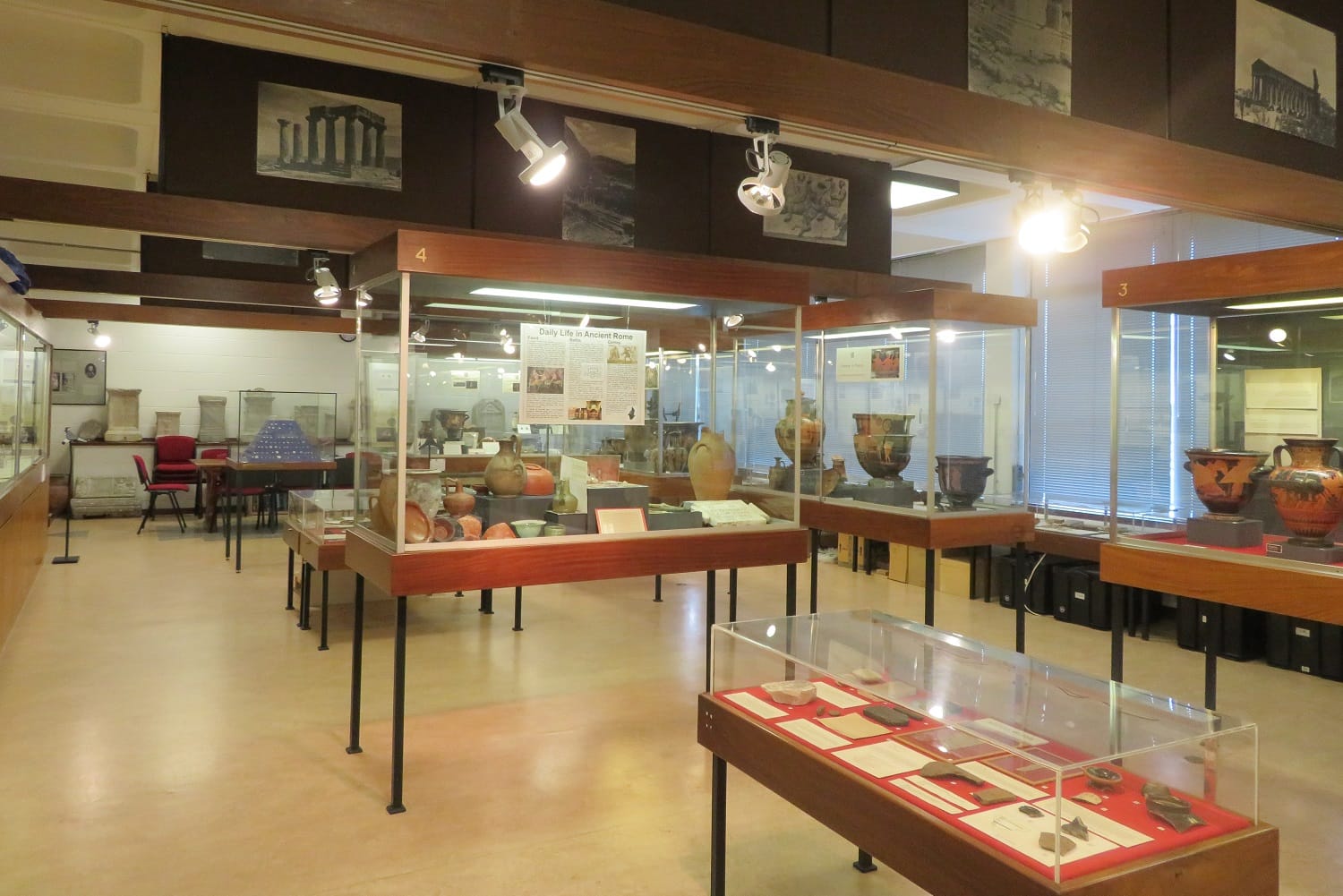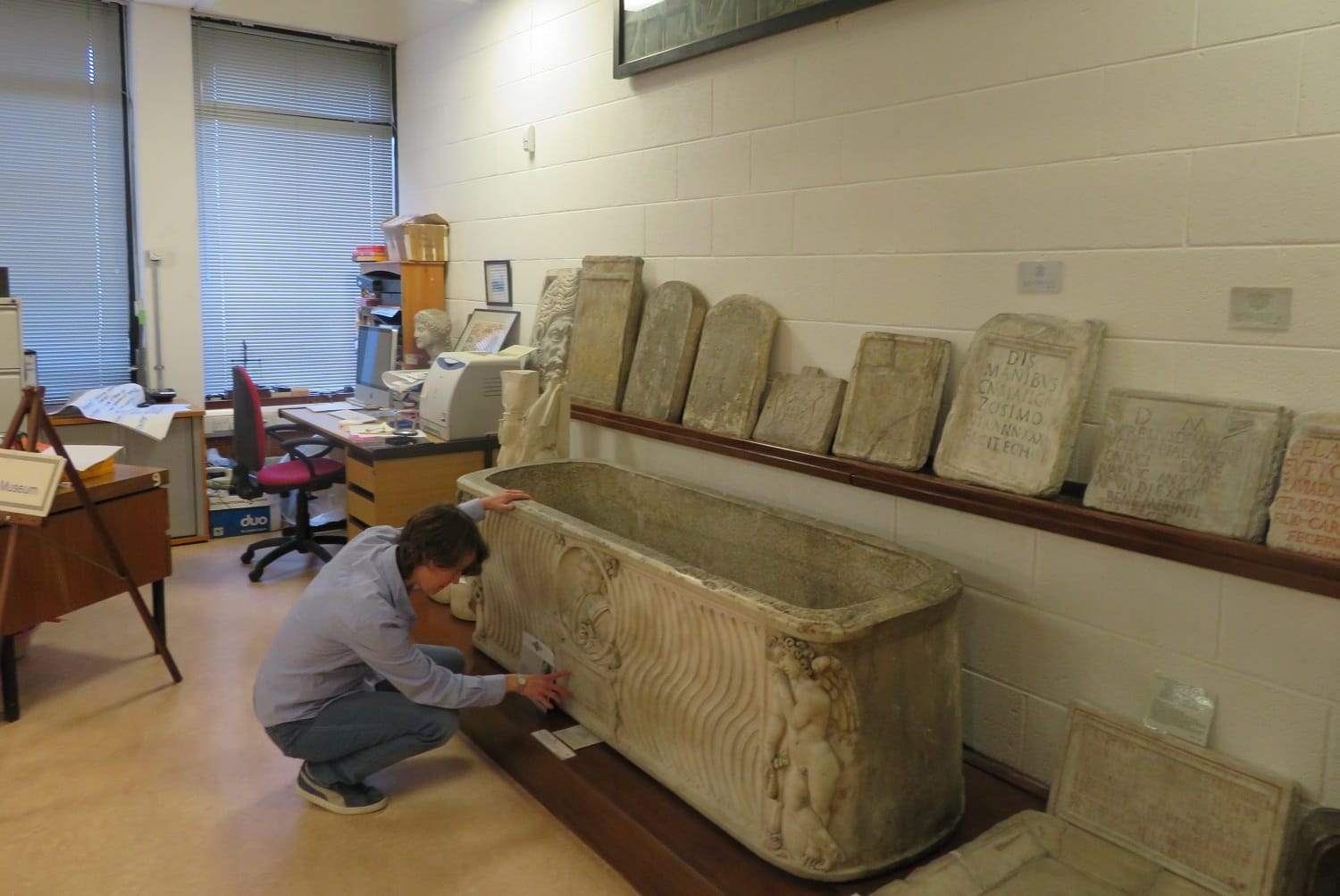Nobody caught illegally dumping yet by new north inner-city CCTV
But the scheme is a success, said a council official's report, as that shows the cameras are a deterrent.
The building it’s in at UCD is due to be fully refurbished, starting later this year. Pádraic Moore fears the museum could lose some of its character and charm, once it is modernised.

In 2001, Pádraic Moore stumbled on a classical museum.
He was studying art history at University College Dublin (UCD). Hardly anyone knows that the UCD Classical Museum exists, he says.
“Coming from Dublin there is a dearth of museums and institutions to discover,” says Moore, now an independent art curator. “It’s an overlooked gem.”
Upstairs in the arts building at UCD, Joanna Day, assistant professor in Greek archaeology, unlocks a door to what looks like an ordinary classroom. Inside are cases and displays of Egyptian, Greek and Roman artefacts.
In wooden display tables with glass casings sit coins, ornate vases, decorated wine vessels, and perfume bottles. Lined against the walls at either end are stone sculptures, plaques and what looks like an ornate marble bath.
In the corner of the room, a modern desk with a computer looks out of place among the ancient items.
There is a slight sense of chaos, which Moore says gives the museum its charm. “Because the museum was built in the ’70s, it has that timeworn quality. It doesn’t look like a museum that was built today, which would be a bit sterile,” he says.
That is likely to change later this year though. The arts building, officially called the John Henry Newman Building, is set to be fully refurbished, starting in late 2020.
Moore fears the museum could lose some of its character and charm, once it is modernised. People should go see it before it happens, he says.
Together with Day, who is also the curator of the museum, Moore is hosting an art exhibition in the UCD Classical Museum from 26 March to 8 May. “The exhibition is a swan song for the museum in its current form,” he says.
“This is the only classical museum in a university in Ireland,” says Day. In other countries, it is common to have teaching museums, she says.
In 1910, Henry Browne, a professor of Greek at UCD and a Jesuit priest, founded the museum, back when the college was still based in Earlsfort Terrace, says Moore.
Browne wanted it to be a place where people studying classics could learn by seeing and touching artefacts. Today, you can still have physical contact with some of the artefacts there.
“This is a teaching museum, so I have a number of sacrificial objects,” says Day, a small woman with short brown hair wearing a loose blue shirt. She reaches into the bottom drawer of a cabinet and pulls out a chunk of broken-off brown-lined pottery.
“This is probably the oldest thing in the museum,” she says. “It is a piece of Neolithic pottery from Crete.” It feels rough.

“This is from Egypt, so it’s called a shabti figurine,” she says, handing over a blue, statuette about three inches long. “These would go in graves as kind of workers in the afterlife,” says Day.
“They would do things like make your bread and do your gardening, so you could chill out and enjoy eternity,” she says, laughing. “The more of them you had the more you could relax.”
From the next drawer up, she fishes out an original Roman coin, fat and metal with two heads facing in opposite directions – and very heavy. Back then the weight of the metal had to equal the value of the coin, she says.
It isn’t a ruler’s head on the coin, she says. This was before the time of the Roman emperors. “There is a God called Janus, who our month of January was named after. He looks forward and backwards, so he has two heads.”
“There is no presence of any sexuality or eroticism in the collection, which is quite hard to avoid in Greek art,” says Moore. “That kind of thing is notable by its absence.”
That is likely because the founder of the museum was a “man of the cloth”, he says.
Several private contributors also donated their collections to the museum, says Day. Among them Sir George Cockburn of Shanganagh Castle, who would have collected the artefacts in order to display them in his own home, she says.
Day points to what looks like a large vase. It depicts a number of men with ornate headwear. Some are lying back drinking, others appear to be dancing.
The scene is of a symposium, she says, a party where men would get together and drink wine mixed with water from this decorated container, and discuss topics like philosophy and politics.
“They believed you had to mix water and wine together or otherwise Dionysus (the god of drink) would take you over,” she says. In other words, you’d get drunk.
“You were supposed to have it in moderation to facilitate discussion,” she says.
A large, very ornate marble structure sits at the end of the room, surrounded by plaques. It has a sculpture of a woman’s head and looks like a bath.
“It is not a bath,” says Day. “Everyone thinks it is a bath. It is actually a coffin.”
The marble coffin is a 3rd-century AD Roman artefact, with a sculpture of the woman who was buried in it. There is also an inscription in Latin that says her husband Augustus paid for it, and that he was a “freeman”, says Day.
“That is, he used to be a slave and is now freed,” she says. “Freemen are the nouveau riche and inclined to splash the cash.”
How did you get to be freed? “Quite often the way you get freed is if your master frees you in his will, then usually they would leave you a sum of money too,” Day says. Then the likes of Augustus could use the money to set up a business.
Coffins, tombs, and funerals were really important, Day says. There were benches outside tombs, so families would go and have picnics at dead relatives’ resting places.
People who did not have a family didn’t want to miss out on being mourned either. So they would pay people in advance to make sure they had a well-attended funeral feast, and those paid mourners would even visit their tombs afterwards too, says Day.
The upcoming art exhibition Day and Moore are co-curating is entitled The Museum of Ancient History, which was the original name of the museum.
The idea is to display modern artworks alongside the museum’s artefacts. Works from artists such as Dorothy Cross, Michelle Doyle, Aleana Egan, Patrick Hough, Richard Proffitt and Charlott Weise – all of whom are currently working on pieces inspired by the ancient world.
It will be “a dialogue between artwork from the present, the 21st century, and these ancient artefacts going back to before Christ”, says Moore.
Hopefully, this will prompt people to wonder: what is old and what is new? And create a bit of ambiguity, Moore says. He envisions it as a “subtle intervention into the space”.
Day says some of the modern artwork will be going into the drawers alongside ancient artefacts. “So the idea is that you can open them and discover the ancient and the modern artefacts, side by side,” she says.
Archaeologists and artists have a lot in common, says Day. “That is what we do as archaeologists, we tell a story about the past, and that is what an artist does too, they are telling a story.”
